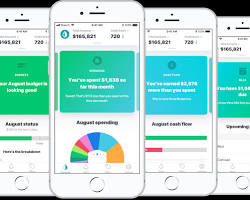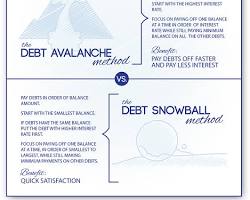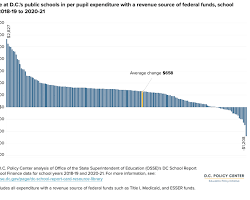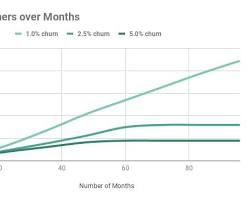we're focusing on actionable steps to completely transform your financial situation in a way that feels realistic. We're talking about going from "instant ramen for dinner again?" to "finally affording that weekend getaway" kind of change.
The Reality Check:
Hold on a sec, let's ditch the generic definition of "rich." What does financial freedom REALLY mean to YOU? Is it having a comfortable buffer zone in your bank account in case your car breaks down? Maybe it's finally going on that dream vacation to Bali without stressing about the cost. Once you define your own version of financial freedom, we can build a personalized roadmap to get you there.
The 6-Month Action Plan
Month 1: Conquer Your Cash Flow
Imagine opening your wallet and seeing actual cash instead of tumbleweeds! That's the dream, right? But before you can reach your financial goals, you need to understand where your money goes. This month is all about becoming a financial detective and tracking your spending.
There are two main ways to track your spending:
Budgeting Apps: There are many free and paid budgeting apps available, such as Mint or You Need a Budget (YNAB). These apps allow you to connect your bank accounts and credit cards, automatically categorize your spending, and generate reports.

Pen and Paper: For a simpler approach, you can use a notebook or spreadsheet to track your expenses. List out each expense for a month, including the amount, date, and category (e.g., groceries, gas, entertainment).
Be Honest:
Tracking your spending can be a real eye-opener. Don't fudge the numbers! Writing down every expense, no matter how small, can be a wake-up call. For example, that seemingly insignificant $5 latte habit can add up to $30 a month, or $360 a year! Think about what you could do with that extra money instead.
Categorize Your Spending:
Once you've tracked your expenses for a month, categorize them. Common spending categories include:
Housing: Rent or mortgage payment, utilities, homeowner's insurance
Food: Groceries, shopping
Transportation: Gas, car payment, public transportation
Debt: Minimum payments on credit cards, student loans, etc.
Insurance: Health insurance, car insurance
Personal Care: Haircuts, toiletries
Entertainment: Movies, concerts, nights out
Savings: Money you set aside for emergencies or future goals
By categorizing your spending, you can see where your money is going and identify areas where you can cut back.
Pro Tip: Once you've identified your spending categories, set realistic goals for each one. For example, if you find you're spending too much on eating out, challenge yourself to cook at home more often.
Month 2: Debt Demolition Party
This month, we're going to tackle those pesky debts and turn them into confetti (figuratively speaking). Imagine celebrating with a shower of shredded loan papers – that's the feeling we're aiming for!
List Your Debts:
The first step is to gather all your financial statements – loan statements, credit card bills, anything that shows how much you owe. Make a list of every debt you have, including the following information for each:
Creditor: The name of the bank, loan company, or credit card issuer you owe money to.
Balance: The total amount of money you owe on the debt.
Interest Rate: The annual percentage rate (APR) you are charged on the debt. This is essentially the cost of borrowing the money. Higher interest rates mean you'll pay more in the long run.
Debt Avalanche vs. Debt Snowball:
There are two main strategies for paying off debt: the avalanche method and the snowball method.

Avalanche Method: This method prioritizes paying off the debt with the highest interest rate first, regardless of the balance. While it might feel slower at first (since you're tackling the bigger debts), it saves you the most money in interest charges overall.
Snowball Method: This method focuses on paying off the debt with the smallest balance first. This can be a great motivator as you'll see debts disappear quickly, which can fuel your momentum.
The best method for you depends on your personality and financial situation. If you're highly motivated by seeing results quickly, the snowball method might be a good fit. If you're more concerned about saving money on interest, the avalanche method is the way to go.
Consider Debt Consolidation:
Debt consolidation can simplify your repayments and potentially lower your interest rates. Here's how it works: You take out a new loan to pay off all your existing debts. Ideally, the new loan will have a lower interest rate than your current debts, which can save you money in the long run.
Month 3: Savings Supercharge
Now that you've conquered your cash flow and tackled your debt, it's time to build your savings! Imagine a bank account overflowing with cash – that's the feeling we're going for this month. Here are some strategies to supercharge your savings:
**Set Realistic Savings Goals **
Don't aim for the moon right away. Start with small, achievable goals that you can celebrate along the way. For example, maybe your first goal is to save $200 for a weekend getaway. Once you reach that goal, reward yourself and set a new, slightly higher savings target.
This approach will keep you motivated and on track. Here are some ideas for savings goals:
Emergency fund: Aim to save 3-6 months of living expenses to cover unexpected costs like car repairs or medical bills.

Dream vacation: Set a savings goal for that trip you've always wanted to take.
Down payment on a car or house: Saving for a down payment can help you qualify for a better loan and save money on interest.
Retirement: The sooner you start saving for retirement, the better. Even small contributions can add up over time.
**Automate Your Savings **
Make saving effortless by setting up automatic transfers from your checking account to your savings account. This way, you "pay yourself first" and ensure you're consistently building your savings.
**Explore High-Yield Savings Accounts **
Not all savings accounts are created equal. Traditional savings accounts typically offer low interest rates. Consider shopping around for a high-yield savings account that offers a better return on your money. While the interest rate might not seem like much at first, it can add up over time.
Here are some additional tips for supercharging your savings:
Challenge yourself with a no-spend week: Pick a week to avoid unnecessary spending. This can be a great way to boost your savings and identify areas where you can cut back.
Sell unwanted items: Declutter your house and turn those old clothes or electronics into cash with a garage sale or online marketplace.
Cook at home more often: Eating out can be expensive. Challenge yourself to cook at home more often to save money on food.
Month 4: Career Conquest
This month, we're all about taking your career to the next level! Imagine yourself feeling confident, challenged, and financially secure in your job. That's the kind of career conquest we're aiming for. Here are some strategies to get you there:
Invest in Yourself:
The best investment you can make is in yourself! Developing new skills and knowledge can make you a more valuable asset to your employer and increase your earning potential. Here are some ways to invest in yourself:
Upskilling: Identify skills that are in demand in your field and take courses or workshops to learn them. Many online platforms offer affordable courses on a variety of topics.

Formal Education: Consider going back to school for a degree or certificate program. This can be a great way to qualify for new jobs or promotions.
Professional Development: Attend industry conferences or workshops to stay up-to-date on the latest trends in your field.
Network Like Crazy:
Your network is your net worth! Building relationships with people in your field can open doors to new opportunities. Here are some ways to network:
Attend industry events: Meetups, conferences, and trade shows are great places to connect with other professionals.
Join professional organizations: There are professional organizations for almost every industry. Joining one can be a great way to meet people and learn about new opportunities.
Connect with people on LinkedIn: LinkedIn is a powerful tool for networking. Connect with people in your field and join relevant groups.
Negotiate Your Worth:
Don't be afraid to ask for what you're worth! If you've been consistently delivering strong results at work, you may be due for a raise. Here are some tips for negotiating your salary:
Do your research: Know the average salary for your position in your geographic area. This will give you leverage when negotiating.
Practice your pitch: Be confident and articulate your value to your employer.
Be prepared to walk away: If you don't get the offer you deserve, be prepared to walk away and look for another job.
By following these tips, you can take control of your career and achieve your financial goals.
Month 5: Build Your Wealth Machine
Now that you've conquered your cash flow, tackled your debt, and supercharged your savings, it's time to build your wealth machine! Imagine a well-oiled machine that consistently generates wealth for you – that's the kind of wealth machine we're aiming for this month. Here are some key components:
Emergency Fund First:
Life happens. Unexpected expenses like car repairs or medical bills can derail your financial progress. That's why it's crucial to have a solid emergency fund. Aim to save 3-6 months of living expenses to cover these types of costs.

Retirement Planning:
The sooner you start saving for retirement, the better. Even small contributions can add up over time thanks to the power of compound interest. Here are some options for retirement savings:
Employer-sponsored retirement plan: Many employers offer retirement plans like 401(k)s or 403(b)s. These plans often come with employer matching contributions, which is essentially free money!
Individual Retirement Account (IRA): An IRA is a tax-advantaged account that allows you to save for retirement. There are two main types of IRAs: traditional IRAs and Roth IRAs.
Explore Investment Options:
Once you've built a solid emergency fund and started saving for retirement, you can explore other investment options to grow your wealth over time. Here are a few options to consider:
Low-cost index funds: Index funds are a great way to invest in a diversified basket of stocks or bonds without having to pick individual companies. They typically have lower fees than actively managed funds.
Real estate: Investing in real estate can be a great way to build wealth over time. However, it requires a significant amount of capital and comes with its own set of risks.
Month 6: Celebrate and Keep Going!
You've conquered your cash flow, tackled your debt, supercharged your savings, built your career, and started building your wealth machine! High fives all around! This month is all about celebrating your accomplishments and keeping the momentum going.
Track Your Progress:
Take a moment to reflect on how far you've come. Look back at your spending tracker from month one. See how much debt you've paid down? How much have you saved? Seeing your progress in black and white can be incredibly motivating.

Refine Your Goals:
As your financial situation improves, your goals may change. Maybe you've reached your emergency fund savings target and can now focus on saving for a down payment on a house. Review your goals and adjust them as needed to keep yourself challenged and motivated.
Stay Inspired:
Financial literacy is a lifelong journey. There's always more to learn and new strategies to discover. Here are some ways to stay inspired:
Listen to podcasts: Podcasts are a great way to learn about personal finance on the go. There are podcasts for every learning style and interest.
Surround yourself with positive influences: Connect with other people who are also on their financial journey. This can provide support and accountability.
Conclusion:
Building financial freedom is a marathon, not a sprint. There will be bumps along the road, but with dedication and this action plan, you'll be well on your way to a richer, more secure future. Remember, it's not about becoming a millionaire overnight. It's about taking control of your finances and living the life you deserve. So keep celebrating your wins, keep learning, and keep moving forward!



